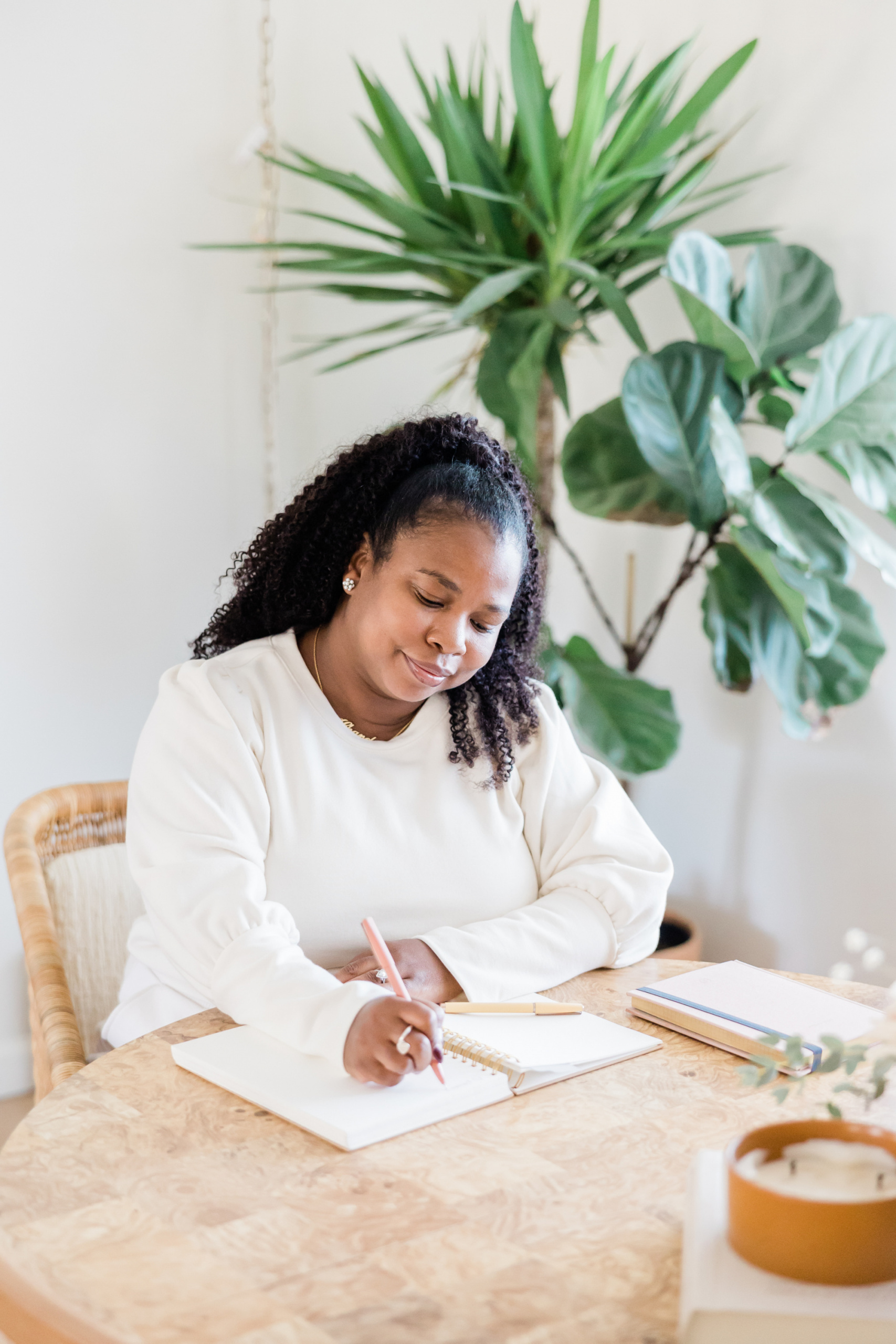How many boundaries have you set, allowed someone to bend, and then finally broke them? More than a few, right? So it must be that setting boundaries either doesn’t work – or they don’t work for you. Here’s the thing: they do work. The problem is, while there is a lot of information about what types of boundaries to set and how they are helpful, there isn’t a whole lot of information about how to set boundaries and keep them. I want to help you learn to set lasting boundaries so you can live the benefits. Benefits like: avoiding burnout, spending time how you want, living your passions, and feeling more compassionate. Here’s how to learn the power of saying “no” AND how to set boundaries that work for you.
In case you missed it, Erin shares her very personal thoughts about the connection between mental health and success here.

What a Boundary Is (and Isn’t)
Boundaries are rules that we set for ourselves to help protect ourselves emotionally, spiritually, mentally, and physically from others. They are guards for our wellbeing. When you set boundaries, you know ahead of time what you will allow and what you won’t. Which makes sense. But this isn’t always how we implement boundaries.
Here’s what a boundary isn’t. A boundary isn’t a way to control other people. You don’t set boundaries for them. You aren’t actually trying to get them to do anything. This is a key part of boundary setting. For example, if you set a boundary that is, “Mom, if you try to discuss my eating habits at family gatherings, I will leave the room.” That is a clean, clear boundary. If Mom brings up your eating, you leave the room. Done. On the other hand, if your boundary is, “Mom, I’m not coming to the family gathering unless you admit you push unhealthy eating ideals,” then you’re actually not setting a boundary. You’re trying to control your mother. To dive a little deeper into what boundaries are and aren’t, check out Where To Draw the Line by Anne Katherine.

Know What You Really Need
Part of setting a boundary that is going to work is knowing what you’re trying to accomplish with the boundary. Maybe you need to have a clearer separation of work from your personal time, so you set a boundary around when you will or will not be available after work hours. Maybe you need to protect yourself emotionally from people whose core values and beliefs do not align with yours.
Whatever boundary you are setting needs to come from something you need. Sometimes we practice burying what we need, so it can be difficult to actually get to the root of it. Spending some time journaling about the topic can help you. Let’s say you want to set a boundary around when you are available to your boss after work hours, but the why is muddled. Giving yourself the opportunity to journal about your boss asking for communication outside of work hours could help you better understand what your real needs are, which will help you set boundaries that work. Need a little more to get to the root of your needs? Try Michelle Elman’s The Joy of Being Selfish.

Understand Why Keeping the Boundary Is Difficult
Setting a boundary is only half of the process. You also need to keep it. If you’re someone who struggles to keep your boundaries, then you need to get to the root of that too. As a former people-pleaser (here’s a book to help you get over that), I used to equate my value to how happy I could keep the people around me. This is common, especially since society often teaches women to believe their value is based on what others think…but it turns out that I was never making everyone happy anyway. So setting and keeping boundaries is easier for me now.
It can also be easier when you recognize it is an area of weakness. Seems counterintuitive maybe, but here’s how it works. It’s like when you decide to eliminate sweets. Then someone comes into work with a box of doughnuts. Recognizing that you can both want and not eat the donut can make keeping your boundary easier. But it doesn’t come from a place of belittling yourself. It’s not, “I said I wasn’t going to eat doughnuts. I shouldn’t want that donut.” It’s more, “Oh, of course I want that donut. I love donuts. But I don’t actually have to eat it. And being uncomfortable now is ok. I will be happy that I kept my boundary later.”
So, if you’re struggling to keep your boundaries keep these components in mind:
- Double-check that you’re not trying to control others.
- Set a boundary that gets to what you really need.
- Be sure you’re not trying to people-please at the expense of yourself.
- Realize new boundaries will be uncomfortable at first.
The book Boundaries and its companion workbook can help you work through your boundary-setting difficulties.

Be Assertive, Not Aggressive
If you’ve never set boundaries before, or you’ve had porous boundaries, setting boundaries that work may challenge people around you. There will be tension. Again, that’s ok. You’re not trying to control them, and you don’t owe them to have your boundary crossed. A firm, unbreakable boundary is one that will work. You don’t need to convince anyone, so there’s no need to be aggressive about it.
Work to challenge your guilt over the boundary. For example, if your partner is introverted and prefers weekends at home cuddling on the couch, but you are an extrovert who loves being out with friends, you may set a boundary around how many weekends you are with your friends and how many you’re with your partner. But at first, your partner (or friends!) could push back saying, “But don’t you know I’ll be lonely without you here?” Their loneliness is a them issue. You are not abandoning them when you choose to fill your own cup. And you’re not saying you’ll never cuddle. You’re saying you won’t only cuddle. If you think you may need help framing your discussion and boundaries, read Set Boundaries, Find Peace by Nedra Glover Tawwab.

Thrive
Learning to set boundaries that work takes time and practice. Allow yourself the space to grow and learn what works best for you. It will feel difficult and awkward to practice keeping your boundaries at first, but as you get used to it, it will be easier. Plus, learning to give yourself space to thrive is a reward in itself. When you set boundaries that work, you can now feel present when you’re with your family, in control of how you spend your time, and able to participate in activities you want to.
If you’re interested, I shared 10 things that happened when I started saying “no” in this post.
So, what do YOU say “no” to? Is there a boundary you set that changed your life? How did you make sure you kept the boundary? I would love to hear about it. Let me know in the comments.
Don’t miss out! Be sure to subscribe to Erin’s newsletter for exclusive content and resources by clicking here.






Boy, do I need this post right now! Thank you, Julianna, for all the resources. I definitely need them! <3
Hi Mindy! I’m so glad you found the post helpful. You deserve those boundaries!